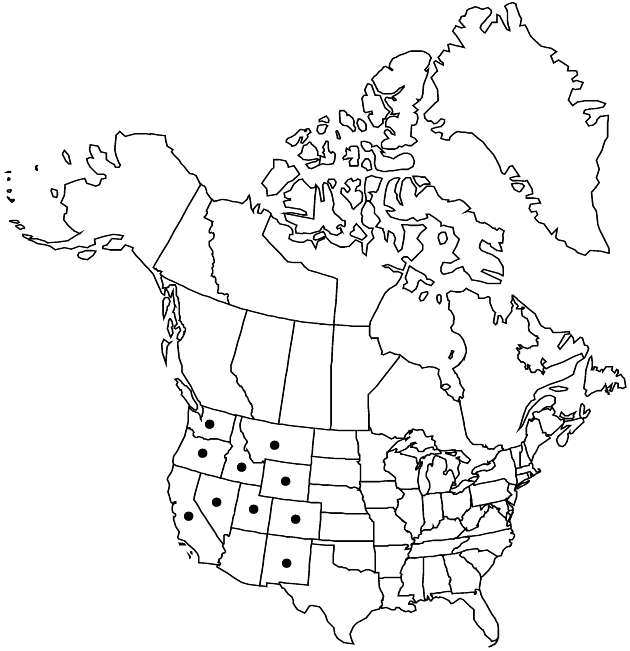Antennaria corymbosa
Bot. Gaz. 27: 212. 1899.
Dioecious. Plants 6–15 cm. Stolons 1–10 cm. Basal leaves 1-nerved, spatulate, 18–45 × 2–4 mm, tips mucronate, faces ± gray-tomentose. Cauline leaves linear, 8–13 mm, not flagged (apices acuminate). Heads 3–7 in corymbiform arrays. Involucres: staminate 4–5.3 mm; pistillate 4–5 mm. Phyllaries (bases each with distinct dark-brown or blackish spot) distally white or light-brown. Corollas: staminate 2–3.2 mm; pistillate 2.5–3.5 mm. Cypselae 0.5–1 mm, slightly papillate; pappi: staminate 2.5–3.5 mm; pistillate 3.5–4.5 mm. 2n = 28.
Phenology: Flowering early–mid summer.
Habitat: Moist subalpine-alpine willow thickets in the Rocky and Cascade mountains, the Sierra Nevada and mountains of the Great Basin
Elevation: 1900–3500 m
Distribution

Calif., Colo., Idaho, Mont., Nev., N.Mex., Oreg., Utah, Wash., Wyo.
Discussion
Antennaria corymbosa is characterized by linear-oblanceolate basal leaves and white-tipped phyllaries, each with a distinct black spot near the base of the scarious portion. A form with black phyllaries (A. acuta) occurs sporadically throughout the range of the species (R. J. Bayer 1988). Antennaria corymbosa is a sexual progenitor of the A. rosea complex.
Selected References
None.